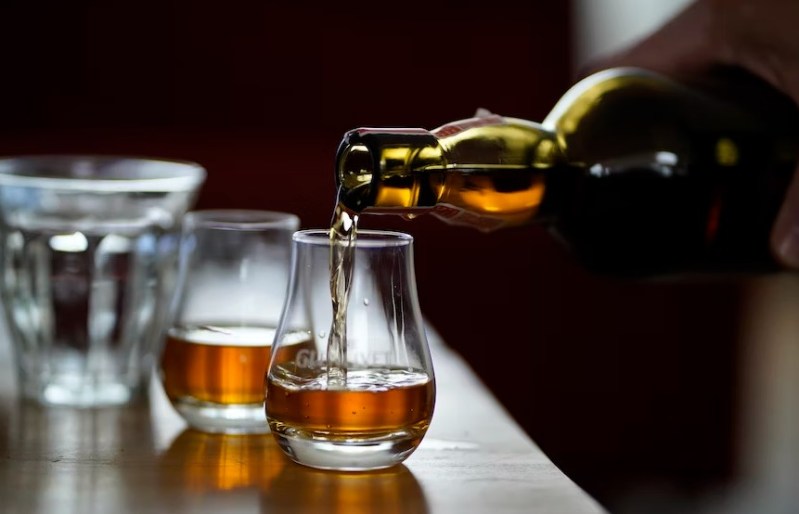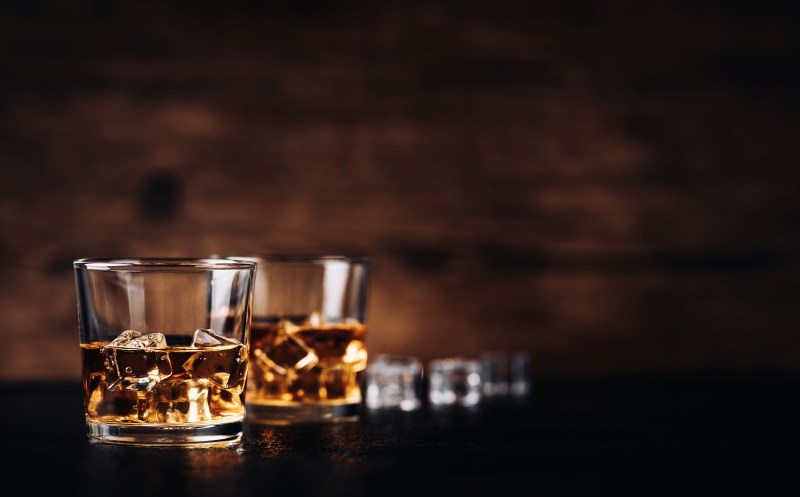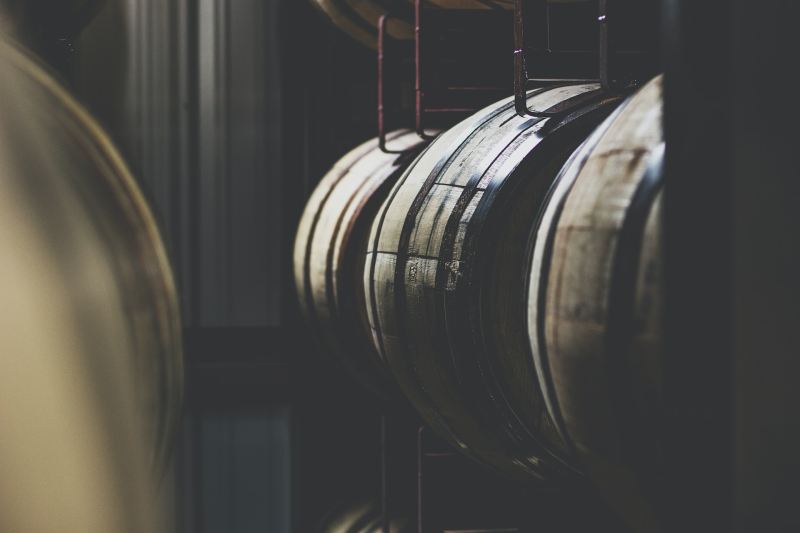
Whiskey, like so many things, has its own vast lexicon. Working around terms like single malt and unicorn — not to mention the old whiskey vs. whisky saga — the spirit can take some getting used to. In the land of liquor, whiskey has both its own rabid following and practically its own language.
We chatted up some experts in the know, specifically folks from two of our favorite distilleries. Master Blender Miles Munroe of Westward Whiskey and co-founder of Wyoming Whiskey David Defazio. Read on for their collective breakdowns of some fairly common and important terms in the great land of whiskey.

General whiskey terms
Whiskey vs. whisky
“When the term is adulterated from the original, vowel-heavy Gaelic words ‘uisce beatha,’ you can’t get too fussy about an errant ‘e’ here and there,” Munroe said. “These days it depends only on label laws or preferences and nothing else.”
“It’s basically whisky (European-based or linked, Japan) versus whiskey (United States),” Defazio explained. “There are exceptions (e.g. Makers Mark uses whisky in reverence to Scottish heritage, Ireland uses whiskey) but there is no definitional difference.”
Unicorn
“A bottle of whiskey that is so special that it’s hard to believe it exists,” Defazio said.
“A hard-to-find, or otherwise rare bottle of whiskey,” Munroe explained. “Hopefully quality and flavor factor into the price tag in these instances, because scarcity and status don’t make a spirit taste any better.”
White dog
“Whiskey makers also call this ‘new make,’ which is liquid distillate off the still that hasn’t seen any time in barrels and has no age to it yet,” Munroe explained. “It can showcase the grain and fermentation flavors in a spirit and may have a rough edge to the taste, as no mellowing effect has taken place with wood and char. It’s whiskey with no barrel influence.”
“The new-make whiskey that comes off the still before it is entered into a barrel,” Defazio said.

Whiskey-making terms
Mash bill
“This is the recipe a distillery uses for its whiskey,” Defazio explained. “For instance, Wyoming Whiskey uses 68% corn, 20% wheat, and 12% malted barley as its standard mash bill. Every distillery uses some variation of this (while usually using rye as an alternative to wheat) to make their whiskey. However, in order to qualify as certain types of whiskey, a minimum amount of specific grains must be used to meet federal requirements. For instance, bourbon must be made by using more than 50% corn in the mash bill. Rye whiskey must use more than 50% rye in the mash bill.”
“The list of grain ingredients used to make a mash, a thick batch of milled grain and water prepared for fermentation,” Munroe said. “Single malts use only one grain in the mash bill, which is malted barley. A bourbon mash bill might contain corn, rye, wheat and/or malted barley for recipes. Some Irish whiskeys can also contain unmalted barley and/or oats.”
Cask strength/overproof
“A typical whiskey ABV is generally between 40% and 45%, although higher expressions have been released, and they’ve gained in popularity over recent years,” Munroe explained. “Distillers add water to adjust the proof and to find the concentration that drinks best, with water, ‘opening’ the whiskey for more elegant and nuanced drinkability. Cask strength is bottling the spirit with no water added, which means maturation strength. Aging at higher ABVs allows for heightened various interactions with oak casks and the flavors provided from them.”
“These are two different, yet related, terms,” Defazio noted. “cask strength (or barrel strength) whiskey is whiskey that has been removed from its barrel and bottled in exactly the same form as it was in the barrel (but has usually been filtered to remove sediment, mainly charcoal). This is a very popular trend with distillers these days who are meeting the demand of certain consumers. A cask strength bourbon symbolizes the purest and most honest offering from a distiller, as the bourbon is not tampered with in any way by adding water to manipulate the flavor profile of the product. Overproof whiskey is simply a higher proof whiskey, usually over 100 proof.”
Barrel regimen
“This can refer to how a barrel is treated at the cooperage, because there are several options for distillers,” Munroe said. “Once the type of oak is chosen, the amount of time the wood is set to dry and cure in stacks while exposed to the elements is optional. Then, the amount of toasting and charring with the wood is a variable that defines the barrel regimen. Char levels generally range from 1 to 4 with the timing of how long the cask has been set alight determining the different levels.”
Finishing
“Just as you may add a bit of something in your pan at the end of cooking a dish for a pop of flavor, finishing is the same idea with spirits,” Munroe explained. “Distillers can use casks that have held other whiskeys, sherry, rum, or really anything they think would complement the flavor of their whiskey at the end of maturation. This is typically only a few months’ time to allow a small influence on to the whiskey.”
“If a distillery chooses to modify its whiskey after its primary maturation in its first barrel, it may choose to do so by ‘finishing’ it in a different type of barrel,” Defazio said. “For instance, Wyoming Whiskey takes fully matured bourbon and allows it to mature in very old sherry barrels for a short period of time. This allows the sherry influence of the barrel the opportunity to impart its natural sweetness to the bourbon. We then market it as Pedro Ximenez-finished bourbon.”

Whiskey label terms
Bottled in bond
“Pursuant to the Bottle In Bond Act of 1897, a whiskey must meet a handful of criteria before being allowed to advertise their whiskey as ‘bonded’ or ‘bottled in bond,'” Defazio remarked. “The thrust of the act was to guarantee the provenance and authenticity of a spirit through federal codification.”
“An older term that guaranteed a high level of quality and safety in whiskeys,” Munroe said. “You could trust that it came from one source, was made at one time (spring or fall) and spent at least four years in a bonded, protected barrel house when bottled at 50% ABV.”
Estate
“A loosely interpreted term, it isn’t legally defined or universally agreed upon across the industry,” Munroe said. “But it may refer to ‘grain to glass’ production, meaning that most or all of the ingredients involved have been grown or sourced locally by the producer and crafted completely in-house. In the case of whiskey, it should also include aging casks very close to where the spirit was distilled. All of this is done in an effort to give a sense of place or origin of the whiskey.”
“Not a term generally used in the whiskey world; more of a wine term,” admitted Defazio. “My understanding is that an estate wine is made with grapes from the winery’s property — everything is onsite. In the whiskey world, I suppose the same would apply, but with grain.”
Single grain
“This term refers to whiskey produced by just one single distillery, but it can be made from one or more grains (malted or unmalted),” Munroe noted. “In Scotland and Ireland, it also means it was aged at least three years. There’s no type of still required to make single grain, but most of it comes from column/continuous stills, and historically it was mostly utilized for blended whiskey labels.”
“Whiskey made with one grain, as opposed to a multi-grain mash bill,” Defazio said. “Scotch only uses barley, for instance.”
Thirsty? Us, too. Check out our beginner’s guide to whiskey types and feature on estate whiskey producers and what it all means. For more helpful terminology, read our wine terminology guide. Cheers!


